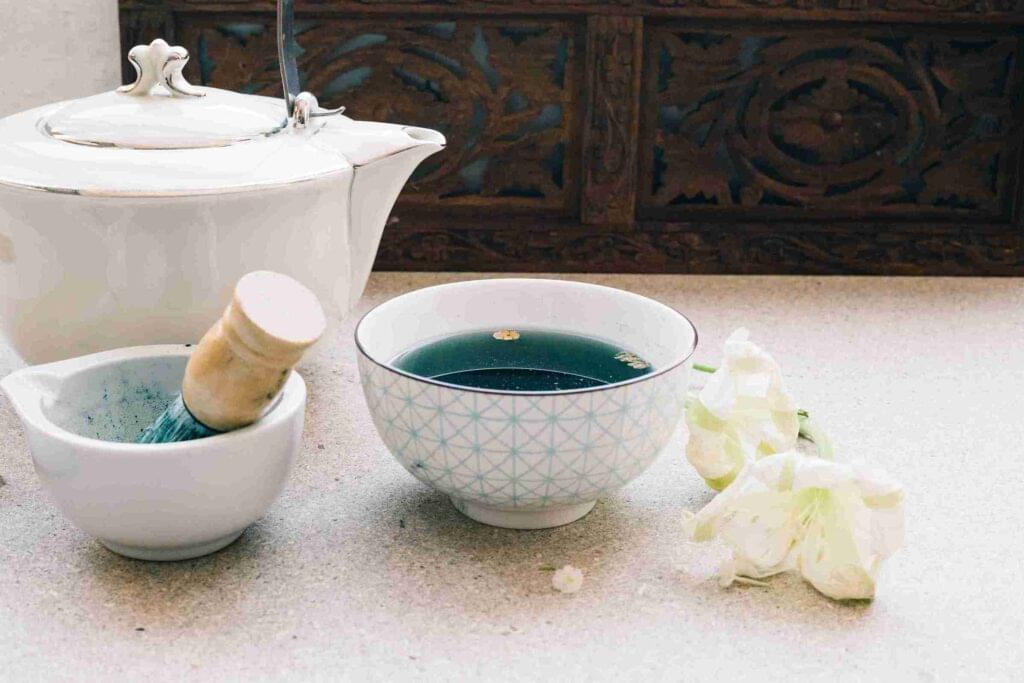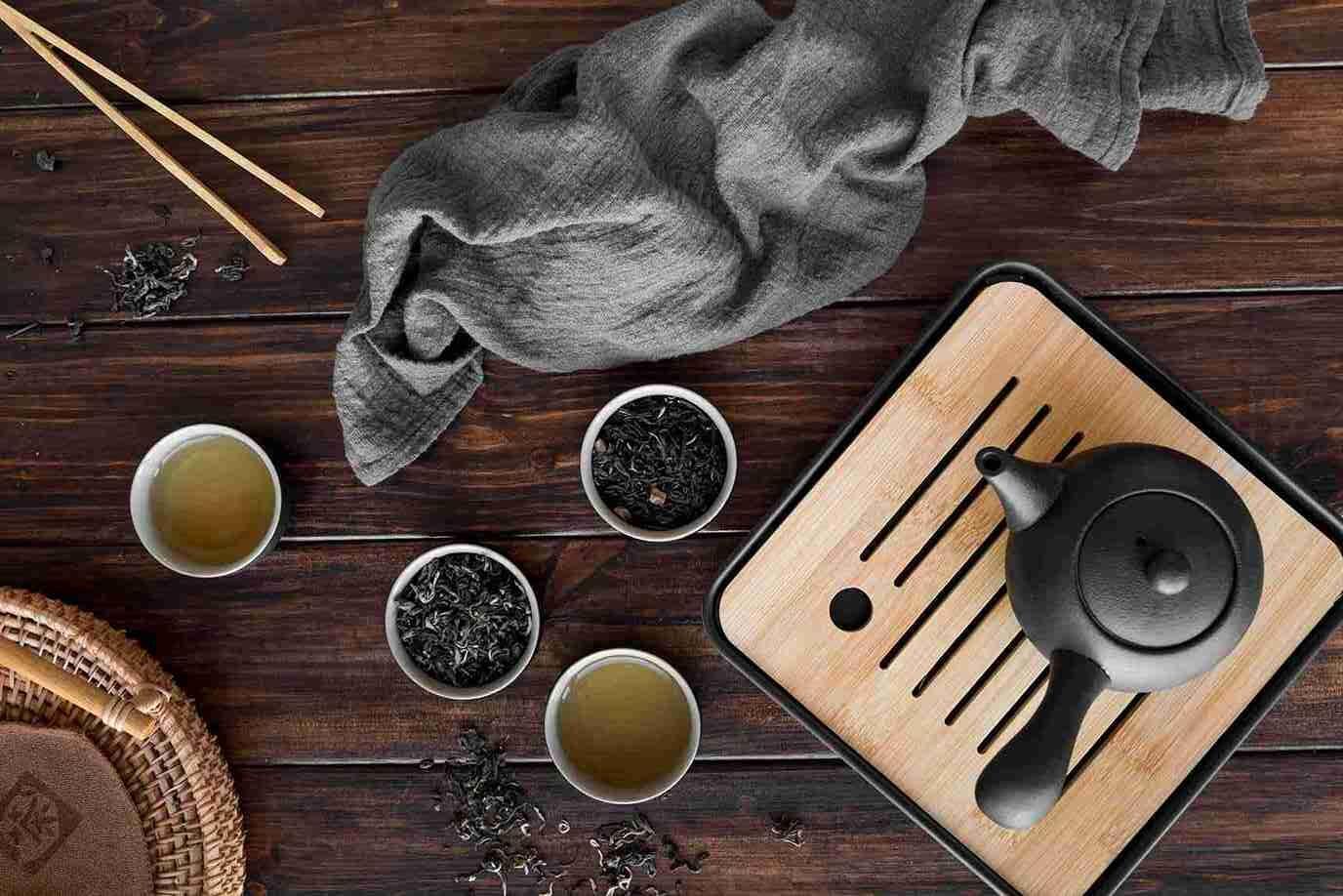The arrival at a Chinese restaurant often brings guests a traditional hot tea welcome and do you know what is the tea used in chinese restaurants. The tea beverage at Chinese restaurants provides a light drink that offers calming effects and tasty flavors. Traditional beverages surpass ordinary drinks because they are an essential component of Chinese dining. Having tea both conditions your taste buds for the upcoming food and contributes to digestion processes. The beverage exists without milk or sugar additives that making it a beneficial option for consumers.
Traditional Chinese tea serves as the beverage choice for Chinese restaurants. Traditionally, Chinese people have been drinking these tea varieties for hundreds of years. When prepared with dedication, these selected tea leaves become the basis of special brews. Three popular traditional Chinese tea varieties exist: Jasmine tea, Oolong tea, and Pu-erh tea. The tea leaves produce distinctive flavor patterns accompanied by specific aromas.

The following blog discusses Chinese restaurant tea, including its production methods as well as its widespread popularity. You can find all the necessary information to truly appreciate tea, whether you want basic knowledge or plan to prepare it yourself at home.
What is the tea used in chinese restaurants
Hot traditional tea in Chinese restaurants delivers a light flavorful experience to customers. Chinese restaurants typically serve three types of tea: Jasmine tea together with Oolong tea and Pu-erh tea. Traditional Chinese culture includes these teas which Chinese people enjoy every day during their meals.
Jasmine Tea
Jasmine tea stands among the most frequently served beverages in Chinese restaurant venues. Green tea receives jasmine flower aroma, resulting in the famous Jasmine tea product. The swee,t flowery aroma of this tea develops because of the addition of jasmine flowers. Drinking this tea provides a smooth flavor that suits both mealtime and serving as a pre-meal beverage.

Oolong Tea
People use Oolong tea as a popular beverage option. This tea exists between both green tea and black tea in terms of its characteristics. The tea falls between strong flavors and light ones due to its condition. This beverage provides a toasty flavor accompanied by refreshing characteristics. It also helps with digestion.
Pu-erh Tea
Pu-erh tea evolves into its best quality through extended aging periods and transforms into a dark tea. It has a deep, earthy flavor. The rare tea varieties of jasmine and oolong tea appear in traditional Chinese restaurants, which have established themselves primarily in traditional Chinese establishments.
Milk and sugar remain absent from teacups when serving these beverages. Tea exists to serve as it was meant to be without any modifications. Adding tea during your meal enables your body to rest while your food’s tastes become more pronounced through the cleansing effect it provides.
What tea is used in Chinese tea?
Chinese tea exists in numerous different types. Three primary forms of tea used in Chinese tea preparations exist as follows:
Green Tea
China consumes green tea as its dominant tea beverage green tea shot recipes also very famous. The tea has light freshness combined with numerous health advantages to offer. Tea leaves remain green from brief cooking time, which also preserves their soft flavor. Among the famous Chinese teas, one can find Longjing (Dragon Well).
Black Tea (Called “Red Tea” in China)
Among Chinese teas black tea stands out for its distinctive sweet nature together with its powerful taste. The complete cooking process gives it its dark appearance and completes its readiness. The famous category includes Keemun tea among its famous types.
White Tea
White tea production uses young tea leaves along with their buds. It is very soft and gentle. The beverage offers mild sweetness together with its delicate taste. The traditional tea variety Bai Mudan (White Peony) belongs to the category of well-known types.

Yellow Tea
This scarce tea beverage resembles green tea while following a method of manufacturing at a reduced pace. The tea feels soft in the mouth while its flavor becomes slightly sweet at the end.
What is the most popular Chinese tea?
Jasmine tea represents the number one Chinese tea selection. Jasmine tea got its distinctive character through the special preparation process.
The manufacturing process of Jasmine tea begins by using green tea leaves. Fresh jasmine flowers are gradually combined with tea leaves when manufacturers conduct environmental drying processes. The flowers are removed after the process, yet their pleasant scent remains. The tea achieves a smooth taste as jasmine flowers leave behind their subtle floral essence when dried with the leaves.
What tea do the Chinese drink daily?
In daily life, many people in China drink green tea. People consume this tea frequently in their homes as well as at their workplaces and throughout their journeys. People love drinking green tea because of its refreshing character, coupled with its basic and health-promoting nature.

Dragon Well tea represents the most widely consumed form of green tea under its alternative name, Longjing. The tea delivers a mild nut-like essence with subtle sweetness that ends on a smooth note. The beverage is customarily drunk plain and without milk or sugar. The preparation requires only using hot water with tea leaves to create a perfect cup.
What is the difference between Chinese tea and regular tea?
Chinese tea stands out because it applies traditional methods using naturally harvested tea leaves. The manufacturing process starting from leaf harvest and concluding with drying methods differs vastly when compared to typical tea bag products.
Here are the main differences:
- Loose Leaves vs. Tea Bags
Whole tea leaves serve as the principal ingredient in Chinese tea preparation, while refusing the use of small pieces or dust. Manual drying by hand, followed by skilled hand-rolling, completes the tea leaves preparation. Tea found in tea bags contains sifted tea leaf products that result in weak yet strong-tasting tea. Although stronger than other teas, this beverage maintains a less fresh and chewier texture. - How It’s Made and Served
Chinese tea preparation involves using small cups or teapots, while hot water serves as the only addition, and sugar or milk remains absent. People dedicate themselves to both sensory perceptions of smell and taste. People typically make regular tea rapidly and sometimes include milk as well as sugar, and lemon in it. - Cultural Meaning
The Chinese culture includes tea as a fundamental element. People consume tea during ceremonies, together with family gatherings and throughout everyday activities. Many people use this beverage to unwind while also using it for social interactions.
Why does tea taste better in China?
The better taste of tea in China stems from its fresh nature and high quality, and meticulous preparation techniques. Drying and hand-picking processes occur for tea leaves in small portions. The correct method for brewing tea requires loose leaves instead of tea bags and involves pouring hot water directly without any adjuncts. Customs involving water selection and teapot choice, together with a specific pouring method, optimize the flavor outcome. China’s drinking culture demands skilled preparation of tea since it is a vital tradition in the society.
Frequently Asked Questions
- What tea do the Chinese drink after dinner?
Following dinner most Chinese people enjoy drinking Oolong tea or Pu-erh tea. After large eating sessions Pu-erh tea together with Oolong tea naturally support digestion and provide relief to the stomach tissues. - Is Jasmine Tea Oolong?
The beverage named Jasmine tea exists separately from Oolong tea. Green tea leaves prepared with jasmine flowers constitute the production of jasmine tea. Oolong tea is different.
Conclusion
The traditional beverage, Chinese tea, serves as a deeply woven cultural practice that brings people health benefits together with peaceful relaxation. The various Chinese tea types range from light jasmine tea to rich Pu-erh with unique characteristics and wellness advantages for each one. Your understanding of Chinese restaurant tea and its special qualities should enhance your enjoyment of your upcoming tea drink.



